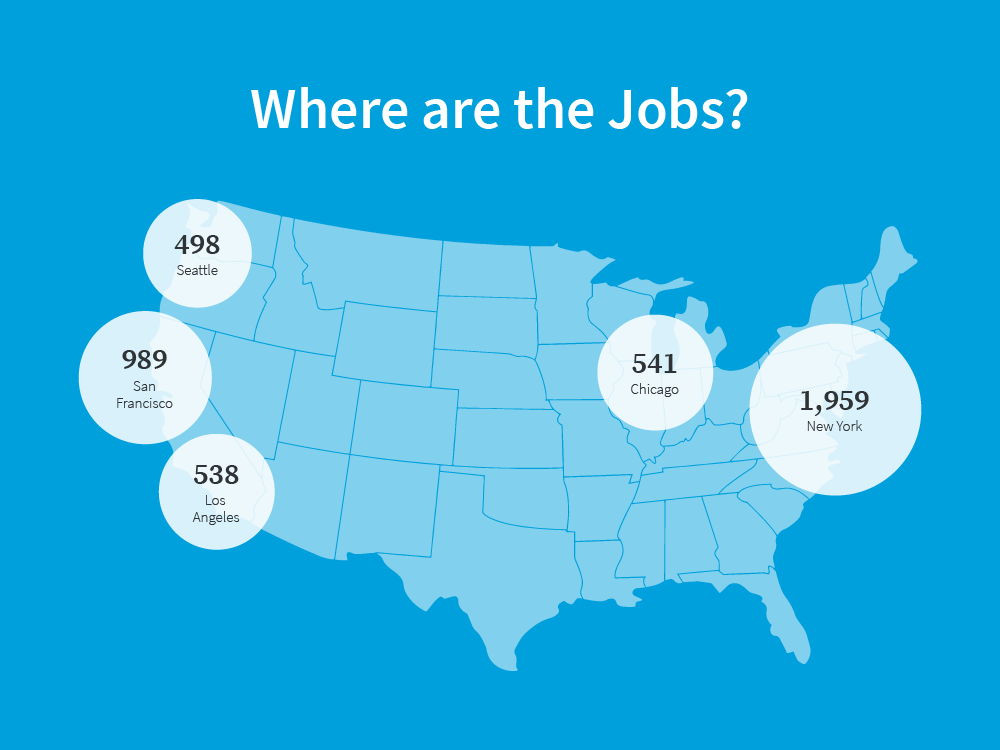Because people have tuned out from paid advertising. According to Curata survey data, 75 percent of companies are either “increasing” or “significantly increasing” their investment in content marketing over the coming year because of its proven efficacy in driving leads and revenue. (highlight to tweet) To produce this content, 43 percent of respondents say they are increasing staff levels, and there were 19,156 content marketing jobs available on LinkedIn in the fall of 2016. This is reflected in the salaries for content marketing jobs on LinkedIn, with the majority under $80,000 p.a. Content marketing is among the top five skills that recruiters search for on LinkedIn. They’re looking for creative people who can produce engaging, in-depth content, backed by research and data. In the coming year, more companies expect to have an executive in charge of their content marketing team, growing from 42 percent to 51 percent. Is Content Creation a Career Path for Journalists? The problem is that people trained in marketing aren’t necessarily great storytellers. Given the demand for journalists’ skills in content marketing (and the higher salaries in a more secure industry), one of the likely trends that will define the following year is a transition of talent from journalism to content marketing.

Content is now a mainstay of marketing.
Why? Because people have tuned out from paid advertising. We’re all hit by thousands of ads, over a hundred emails, and countless clickbait every day. We’ve learned from a young age not to trust traditional advertisements and marketing; product-centric content bores us.
Today, we want to be entertained and informed by advertising; we prefer real conversations. It’s trivially easy to do our own product research before we make a purchasing decision, and we expect authenticity and integrity from companies before we’ll trust anyone with our credit card information. This makes traditional, product-centric marketing less relevant every year.
As Seth Godin famously said, “Content marketing is the only marketing left.”
So we have a vibrant, fast growing industry—and the accompanying demand for more talent. If you’re looking to begin or extend a career in marketing, content marketing is the place to be.
What does it take to succeed in content marketing? Curata teamed up with LinkedIn and pooled our data to answer this question. Here’s what we found.
Fast Growth
The research shows investment in content marketing is increasing, more content is being produced, and more staff are being hired to produce this content.
According to Curata survey data, 75 percent of companies are either “increasing” or “significantly increasing” their investment in content marketing over the coming year because of its proven efficacy in driving leads and revenue. (highlight to tweet) To produce this content, 43 percent of respondents say they are increasing staff levels, and there were 19,156 content marketing jobs available on LinkedIn in the fall of 2016.
To put this in perspective, that’s 2.8 times the number of jobs in product marketing, 5.5 times the number of brand marketing job openings, and 9.4 times the demand generation jobs listed on LinkedIn. People with “content marketing” in their titles on LinkedIn have more than tripled since 2001.
Where Are the Best Job Opportunities for Content Marketers?
According to LinkedIn data, five major cities supply the lion’s share of content marketing jobs in the USA: New York, San Francisco, Chicago, Los Angeles, and Seattle.

The technology sector dominates the demand for content marketing talent. Hardware, software, IT services, and telecommunications comprise over 33 percent of all respondents. Then there are marketing agencies (19.9 percent), professional services (15 percent), education (13.2 percent), and healthcare (12.9 percent). These…
COMMENTS